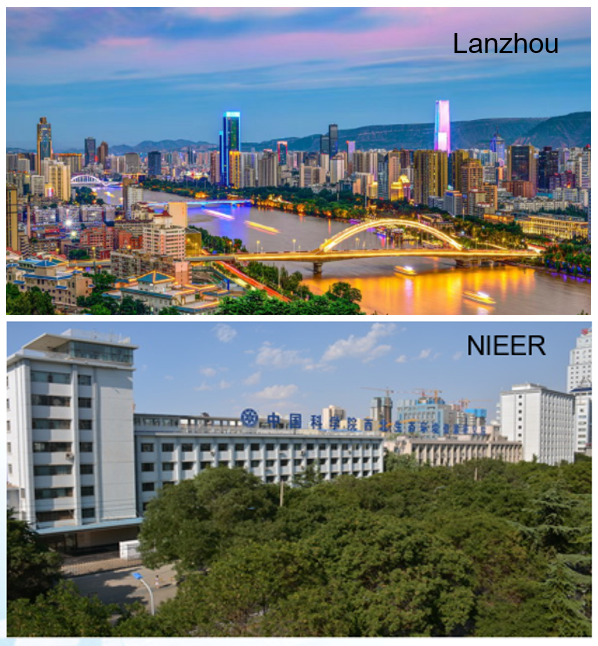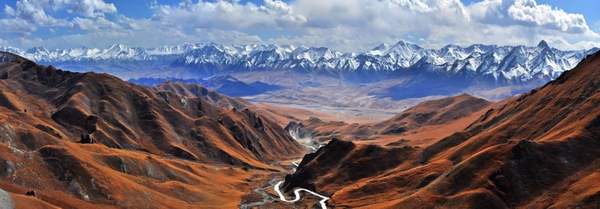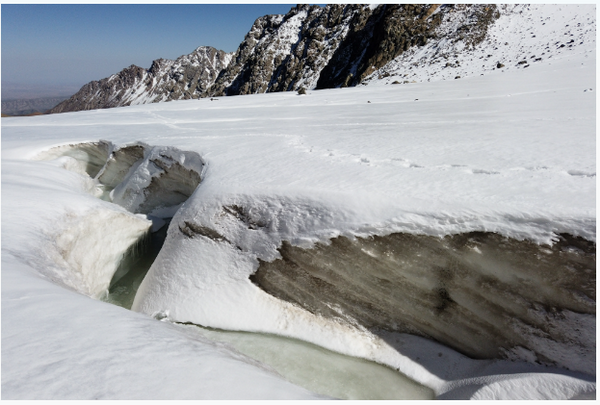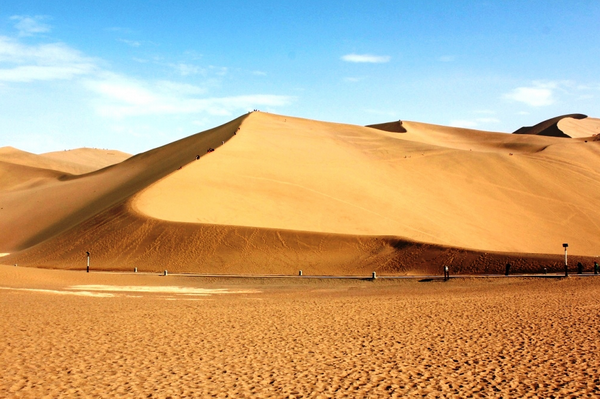Home > News > Upcoming Events
The International Training Course on Cryosphere Observation and Research along the Belt and Road
Updatetime:2024-04-08From:
【Enlarge】【Reduce】
Lanzhou ,China ,15-26 August ,2024

Organized and Sponsored by:
Key Laboratory of Cryospheric Science and Frozen Soil Engineering ,Northwest Institute of Eco-Environment and Resources ,Chinese Academy of Sciences
China Society of Cryospheric Science
Description
Building upon the robust research capabilities in cryosphere research and observation at the Northwest Institute of Eco-Environment and Resources,Chinese Academy of Sciences,the training program endeavors to offer scientific and technological training for countries along the Belt and Road Initiative as well as developing nations. This training initiative is designed to nurture talents in science and technology while fostering collaboration in science and education among different countries.
Objectives
The objective of the training program is to enhance participants' capacity for monitoring and researching changes in the cryosphere in polar and high-mountain regions,thereby advancing global scientific understanding of glacial,permafrost,snow cover,and other cryospheric elements changes ,and strengthening international cooperation.
Participants (by application):
Researchers engaged in cryosphere research in universities and research institutes of countries along the Belt and Road and developing countries ,with specific requirements as follows:
1. Age under 50 years old;
2. Good health,free from infectious diseases ,serious hypertension ,cardiovascular and cerebrovascular diseases ,and physical disabilities;
3. Engaged in Cryospheric research such as glacier ,permafrost ,snow cover ,climate and meteorology ,ecology and hydrology;
4. Proficient in listening,speaking,reading,writing for Chinese or English;
5. Invitation is not extended to dependent or family members;
6. During the training period in China,abide by relevant laws and regulations of the People's Republic of China ,respect Chinese customs.
Training content:
1.Cryosphere and Cryospheric Science
2.Geographic Distribution of the Cryosphere
3.Glacier Changes and Monitoring
4.Snow Cover Changes and Monitoring
5.Permafrost Changes and Monitoring
6.Cryospheric Hydrological Processes and Water Resources
7.Permafrost Ecology and Carbon Cycling
8.Cryospheric Chemistry and Key Processes
9.Climate and Environmental Records of Cryospheric Chemistry
10.Cryospheric Hazards and Forecasting
Field trip:
1. Field Excursion and Sampling Training on Permafrost
2. Field Excursion and Sampling Training on Snow Cover
3. Field Excursion and Sampling Training on Glaciers
4. Field Investigation of Natural and Cultural Landscapes in the Cryosphere-Impacted Area of the Hexi Corridor
Duration: August 15-26 ,2024.
Location: Lanzhou ,China.
Teachers: Prominent scholars engaged in cryosphere change research from the Northwest Institute of Eco-Environment and Resources ,Chinese Academy of Sciences ,as well as relevant universities and research institutes.
Expenses: The project will cover all expenses for round-trip airfare to China for all training participants ,as well as transportation ,accommodation ,meals ,and insurance expenses incurred within China.
Application Process
Applicants are required to complete the attached application form in English and fill it out electronically. Along with the application form ,applicants should submit their professional curriculum vitae (CV) in English ,limited to a maximum of two pages.
The application documents and queries should be sent to following email addresses:
Dr. Kun Wang. icecore@lzb.ac.cn
Prof. Xiaodong Wu: wuxd@lzb.ac.cn
The organizer will assess applications on the basis of their CVs and invite eligible candidates for the training program. All applicants will be informed about the evaluation result.
Application deadline: July 10th 2024.
Introduction to Northwest Institute of Eco-Environment and Resources
The Northwest Institute of Eco-Environment and Resources (NIEER) ,Chinese Academy of Sciences is a multidisciplinary research institute ,specializing in study of eco-environment ,natural resources ,and national key environmental engineering. NIEER focuses on various areas of research ,including cryosphere and global climate change ,frozen ground and cold regions engineering ,desert and desertification ,plateau atmospheric physics and meteorology ,water and land resources and environmental rehabilitation ,ecology and agriculture ,remote sensing information systems ,oil and gas geology ,plateau biology ,and scientific information services. The institute aims to be at the forefront of geoscience by establishing theoretical systems that stand at the forefront of research fields such as atmosphere-hydrosphere-biosphere-cryosphere-lithosphere interaction and global change ,regional climate and environmental evolution ,ecosystem degradation mechanism and reconstruction ,and important natural resources formation and exploitation.

The overview of Lanzhou and NIEER
Brief introduction to Field Trip sites
Day 1 Eboling Mountain (Qilian county)
The Eboling Mountain is situated in the northeastern region of the Qinghai-Tibet Plateau ,with an elevation of approximately 3600 meters above sea level (asl). This area is characterized by rapid permafrost degradation ,leading to the formation of typical thermal erosion gullies.
Day 2 Heihe station (Zhangye city)
The Heihe Remote Sensing Experimental Research Station comprises several sites established for the validation of remote sensing products. These sites employ specialized observation techniques ,including unmanned aerial vehicles (UAVs) ,ground-based remote sensing platforms ,and wireless sensor networks. The station conducts simultaneous satellite-airborne-ground experiments ,ground-based remote sensing control experiments ,and intensive ground experiments periodically.
Day 3 Bailanghe No. 21 glacier (Qilian county)
Bailanghe No. 21 Glacier is situated in the middle of the northern Qilian Mountains. It represents a typical small low-latitude mountain glacier. With an average ice thickness ranging from 40 to 50 meters ,the glacier covers a total area of approximately 1.5 km2. This glacier has been monitored since 2013.
Day 4 Zhangye-Dunhuang
The distance is 500 km ,which typically takes about 7 hours to travel by bus.
Day 5 Desert station (Dunhuang)
The Dunhuang Gobi Desert Ecology and Environment Research Station of the Chinese Academy of Sciences is a desert ecological environment observation and research station. The main research topics include the formation and evolution process of wind and sand environment in extreme arid areas ,and the surface processes of the Gobi ,wind-eroded areas ,and deserts ,as well as mechanisms of sandstorm (dust) disasters.
Day 6 Dunhuang-Wuwei
The distance is 830 km ,about 10 hours by bus.
Day 7 Wuwei-Lanzhou
The distance is 270 km ,about 3 hours by bus.

The view of Qilian Mountains

Bailanghe No.21 Glacier

Dunhuang Desert
Appendix




